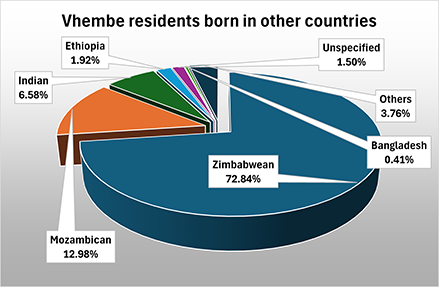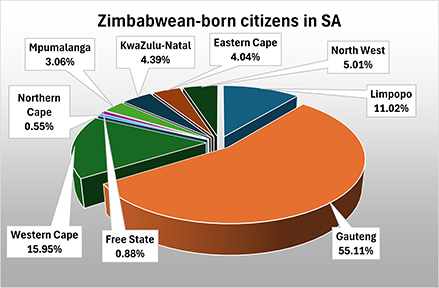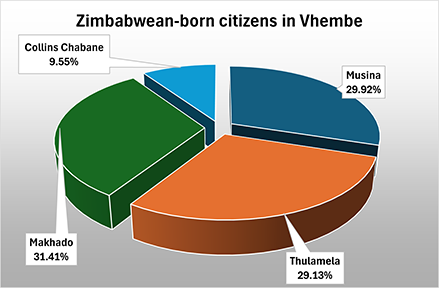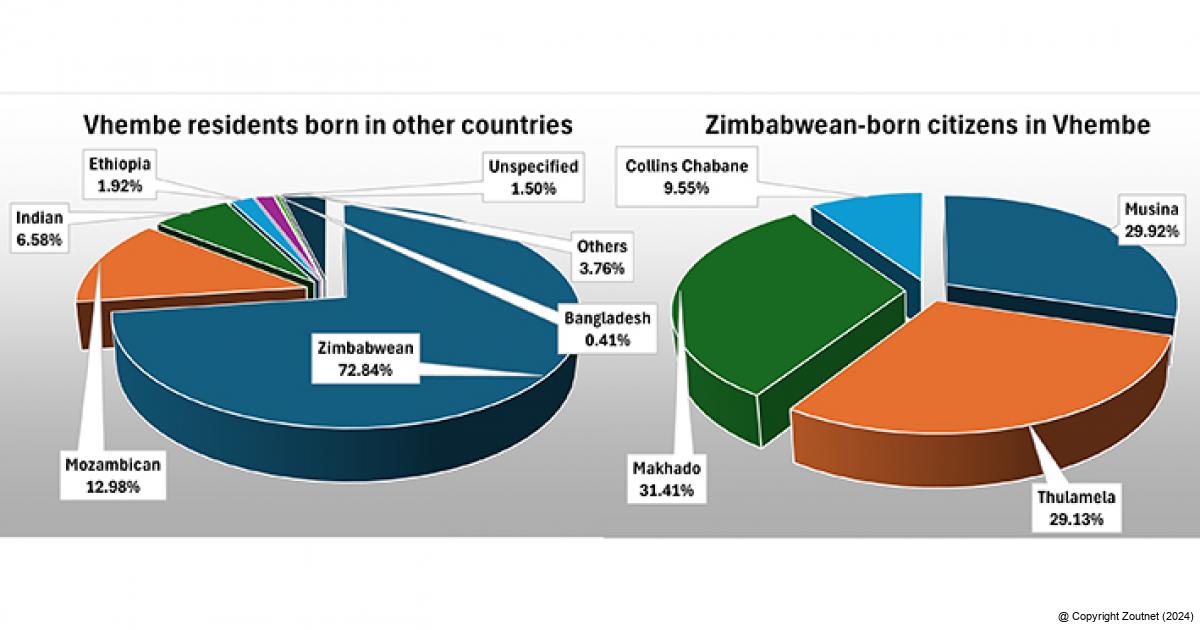

ADVERTISEMENT:

No, the “foreigners” are not suffocating us in Vhembe.
News - Date: 16 June 2024
“These foreigners are taking our jobs ... There are millions of them around us, and they come here and use our clinics and services without paying any tax.”
How often have we heard such arguments? Even some of our politicians resort to such xenophobic rhetoric when trying to lure votes to get re-elected. But how much of this is true? Do we have millions of people in our region who came from other countries simply to exploit our generosity?
The official census figures tell a completely different story and show us that South Africa does not have such a serious immigration problem as many would have us believe.
Let us count them!
As the Census 2022 statistics become more available, they help paint a clearer picture of the world around us. Many sceptics may discard the figures as thumb-suck exercises, but in general, the census results are regarded as reasonably accurate.
If we focus on Limpopo, the total population is estimated to be just over 6.57 million people. Most of them (1.65 million) live in Vhembe District (VD), with Capricorn District not far behind, offering a home to 1.45 million people.
The Census 2022 figures state that 176,132 people in Limpopo had indicated that South Africa was not their country of birth. That means 2.68% of the province’s population may be regarded as “foreigners,” albeit technically not correct, because many of them have taken up citizenship.
This percentage is not exceptionally high. In Gauteng, the percentage of residents born in other countries is 8.01% and in the Western Cape, it stands at 5.07%. Most of these people stay in Gauteng (1.21 million of the 15.1 million residents).
Even by international standards, the immigration levels in South Africa are not out of kilter. In the United Kingdom, the estimation is that 14% of the population was born outside of England. The USA state of California is reported to have a population of which 27% is made up of immigrants. Approximately 88% to 90% of the UAE’s population is made up of expatriates and foreign workers. (These stats are according to Chat GPT but were pulled from sources such as the United Nations and World Bank.)

Our northern neighbours are visiting.
By far the biggest number of non-South Africans were born in Zimbabwe. Just over a million Zimbabwean-born people were counted in South Africa in 2022. Most of them live in Gauteng (557,696), with the Western Cape (161,423) the second-most popular destination. Limpopo comes in at third spot with 111,527 Zimbabwean-born residents. The Northern Cape seems to be the least likely province where a Zimbabwean-born person will go and stay, with a count of only 5,560.
VD plays host to 35.55% of the Zimbabwean-born population in Limpopo. Should one break this down into the four municipalities, Makhado Municipality, at that time, had 31.41% of the 39,652 Zimbabwean-born residents. Musina was home to 11,863 of the Zimbabwean-born residents, but should one consider the border town’s relatively small population, they make up almost 10% of the total population.
This, however, should not be a strange phenomenon, considering Musina’s close proximity to Zimbabwe.

What about the others?
The Zimbabwean-born citizens account for 72.84% of the “foreigners” in VD. The next biggest group were born in Mozambique (12.98%), with the Indian-born population in third place at 6.58%. One has to note that this percentage does not refer to the Indian population in VD, but only the ones born outside of the country. The first Indian traders arrived in the region in the late 1800s, and many of the Indian families have been integral parts of the local communities for several generations.
What is very interesting is that several “pockets” of people from other countries living in the VD exist. Almost 82% of the 7,068 Mozambicans live in the Collins Chabane municipal area. Just more than 1,000 Ethiopian-born residents find themselves in VD, but most reside in the Makhado and Thulamela municipalities. Musina seems to be the place of choice for almost half of the 222 Bangladeshi-born residents.
The census figures make for quite fascinating reading, however, once you drill down to the finer details. Of the 109 Bangladeshi-born residents in Musina, only five are women. In Makhado, one could find 92 male Bangladeshi-born residents, with no women, and in Collins Chabane, a further 18 males reside. Thulamela seems to be an area not favoured by Bangladeshi residents, with only three males.
A similar pattern exists for residents born in Somalia, Ethiopia, and even Pakistan, where many more males can be found than females, often as many as 30 to one. However, in some cases things are the other way around. In Vhembe, 119 women from Lesotho and only 46 men reside. Four Swiss ladies can be found here, with no Swiss men.


Recent Articles
-

Poor woman desperately needs RDP house for her family
23 June 2024 By Kaizer Nengovhela -

Granny Leshavhana celebrates 100 years
23 June 2024 By Kaizer Nengovhela -

Univen student to represent SA in Germany
22 June 2024 By Thembi Siaga -

Well-educated Pfunzo does not mind getting her hands dirty
22 June 2024 By Elmon Tshikhudo
Search for a story:

ADVERTISEMENT


Anton van Zyl
Anton van Zyl has been with the Zoutpansberger and Limpopo Mirror since 1990. He graduated from the Rand Afrikaans University (now University of Johannesburg) and obtained a BA Communications degree. He is a founder member of the Association of Independent Publishers.

ADVERTISEMENT:

